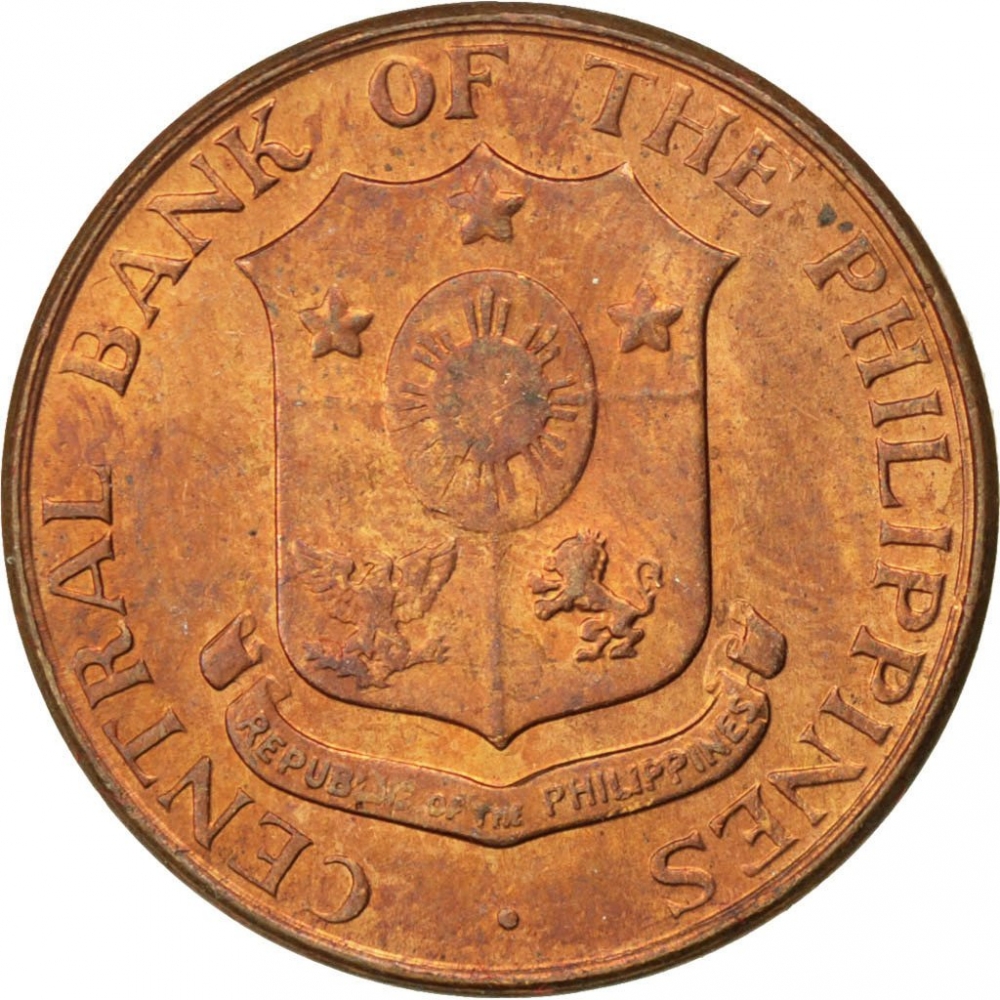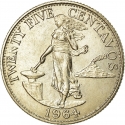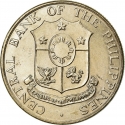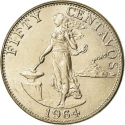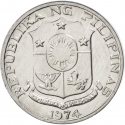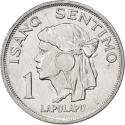Description
In 1958, a new, entirely base metal coinage was introduced, consisting of bronze 1 centavo, brass 5 centavos and nickel-brass 10, 25 and 50 centavos. This series was demonetized after August 31, 1979, except for the 10-centavo that was demonetized only after January 2, 1998.
Obverse

|
Coat of arms of the Philippines.
The Coat of Arms of the Philippines features the eight-rayed sun of the Philippines with each ray representing the eight provinces (Batangas, Bulacan, Cavite, Manila, Laguna, Nueva Ecija, Pampanga and Tarlac) which were placed under martial law by Governor-General Ramón Blanco during the Philippine Revolution, and the three five-pointed stars representing the three primary geographic regions of Luzon, Visayas, and Mindanao.
On the field on the dexter side is the American bald eagle of the United States, and on the field on the sinister side is the lion rampant of the coat of arms of Castile and León, both representing the country's colonial past.
CENTRAL BANK OF THE PHILIPPINES •
REPUBLIC OF THE PHILIPPINES
|
Reverse

|
Hephaestus seated beside hammer and anvil, volcano Mt. Mayon behind, date below.
Mayon Volcano, also known as Mount Mayon or simply Mayon, is an active stratovolcano in the province of Albay in Bicol Region, on the island of Luzon in the Philippines. Renowned as the "perfect cone" because of its symmetric conical shape, the volcano and its surrounding landscape was declared a national park on July 20, 1938, the first in the nation. Local folklore refers to the volcano being named after the legendary princess-heroine Daragang Magayon (English: Beautiful Lady).
Hephaestus is the Greek god of blacksmiths, metalworking, carpenters, craftsmen, artisans, sculptors, metallurgy, fire (compare, however, with Hestia), and volcanoes. Hephaestus' Roman counterpart is Vulcan. In Greek mythology, Hephaestus was either the son of Zeus and Hera or he was Hera's parthenogenous child. He was cast off Mount Olympus by his mother because of his deformity or, in another account, by Zeus for protecting Hera from his advances.
As a smithing god, Hephaestus made all the weapons of the gods in Olympus. He served as the blacksmith of the gods, and was worshipped in the manufacturing and industrial centres of Greece, particularly Athens. The cult of Hephaestus was based in Lemnos. Hephaestus' symbols are a smith's hammer, anvil, and a pair of tongs.
|
| Edge |
|
Characteristics
| Material |
Copper |
| Weight |
3.08 g |
| Diameter |
19 mm |
| Thickness |
1.45 mm |
| Shape |
 round
round
|
| Alignment |
Medal
|
Related coins
English series
Copper Nickel Zinc, 5 g, ⌀ 24 mm
My Collection
My Exchange
English series
Nickel Brass, 10 g, ⌀ 30.3 mm
My Collection
My Exchange
Pilipino series
Aluminium, 0.5 g, ⌀ 15.25 mm
My Collection
My Exchange
|


